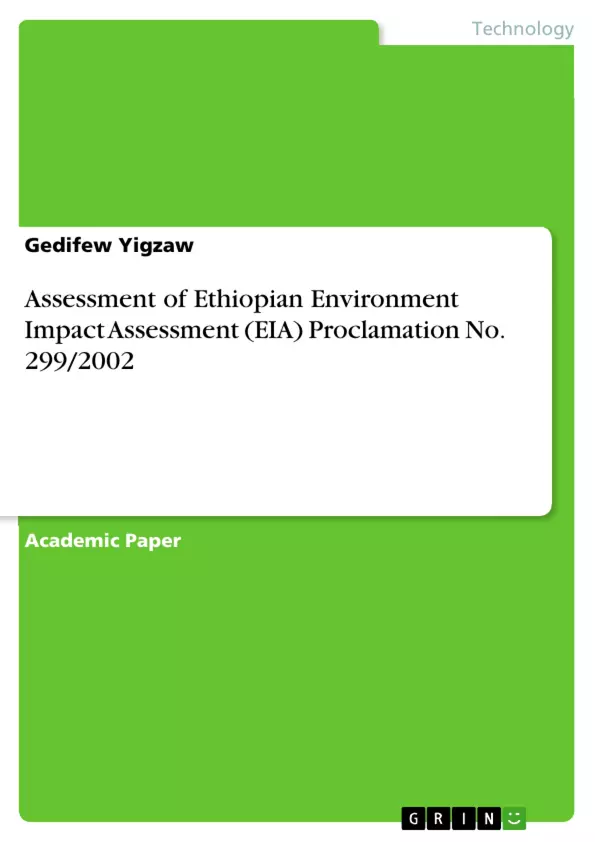The government of Ethiopia introduced the Environmental Impact Assessment (EIA) Proclamation No. 299/2002 in 2002. The overall objective of this study is to critically assess the EIA proclamation (Proc. No. 299/2002) of Ethiopia. So as to critically assess the level of public participation, the adequacy and effectiveness of legally established laws in the EIA process, this study employed qualitative data analysis. This study revealed that the role of public participation in the entire EIA stages is weak. The study also identified that both the legal and institutional frameworks have remained inadequate to ensure full effectiveness of the EIA system. Moreover, this study describes the existence of weak coordination among or between federal, regional, zonal and other sectoral units. Hence, this study recommends that its effective implementation necessarily requires the involvement of the public and the issuance of more specific subsidiary instruments.
Inhaltsverzeichnis (Table of Contents)
- Introduction
- Basic Concepts of Environmental Impact Assessment (EIA)
- Environmental Impact Assessment in Ethiopia: An overview
Zielsetzung und Themenschwerpunkte (Objectives and Key Themes)
This study critically assesses the Environmental Impact Assessment (EIA) Proclamation No. 299/2002 of Ethiopia. It investigates the effectiveness of public participation in the EIA process and analyzes the adequacy and effectiveness of the legal and institutional frameworks involved. The study aims to identify weaknesses and recommend solutions for a more effective EIA system in Ethiopia.
- Public Participation in the EIA Process
- Legal and Institutional Frameworks for EIA
- Coordination among Federal, Regional, and Sectoral Units
- Effective Implementation of the EIA Proclamation
- Sustainable Development and Environmental Protection
Zusammenfassung der Kapitel (Chapter Summaries)
- Introduction: This chapter establishes the importance of EIA in promoting sustainable development, particularly in developing countries like Ethiopia. It highlights the need for environmental considerations in economic development projects and the role of EIA in ensuring a clean and healthy environment.
- Basic Concepts of Environmental Impact Assessment (EIA): This chapter defines "environment" and "environmental impact assessment" (EIA) according to Ethiopian law. It explains the purpose of EIA and its significance in decision-making processes. EIA is presented as a tool to evaluate the potential environmental effects of projects or policies before their implementation.
- Environmental Impact Assessment in Ethiopia: An overview: This chapter provides a historical overview of EIA in Ethiopia, starting with early efforts in the 1980s and highlighting the turning point with the promulgation of important proclamations in 2002. The chapter focuses on the current legal requirements and challenges for the effective implementation of EIA in Ethiopia.
Schlüsselwörter (Keywords)
The key words and focus topics of the text are: environmental impact assessment, public participation, sustainable development, Ethiopian law, Proclamation No. 299/2002, legal frameworks, institutional frameworks, coordination, effective implementation.
- Quote paper
- Gedifew Yigzaw (Author), 2019, Assessment of Ethiopian Environment Impact Assessment (EIA) Proclamation No. 299/2002, Munich, GRIN Verlag, https://www.grin.com/document/497750



